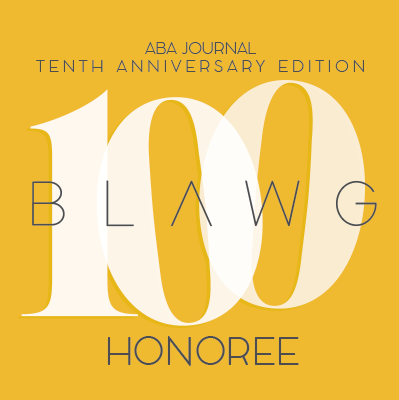Like many other agricultural operations, my family grows crops and raises livestock. When I learned of a case decided last year by the Minnesota Supreme Court that addressed whether farms like my own family’s would be required to obtain a federal NPDES permit in order to graze livestock on our fields, I was very interested and concerned. Today, we will take a look at this issue in In the Matter of Reichmann Land and Cattle, LLP. This case offered interesting insight into the issue of whether winter grazing of livestock on farmland could require a farmer to obtain a federal NPDES permit and shows again how harmful a broad interpretation of the Clean Water Act can be to agriculture.
Legal Background
The Clean Water Act prohibits the discharge of pollution from a point source into waters of the United States. If such pollutants are to be discharged, a federal NPDES permit must be obtained. [To learn more about the Clean Water Act, read this prior blog post.]
Under federal law, a “Concentrated Animal Feeding Operation (CAFO)” is deemd a point source and is subject to the NPDES permitting requirements. See 40 USC 122.23(a).
An AFO is defined as a lot of facility where animals have been, are, or will be stabled or confined and fed or maintained for a total of 45 days or more in any 12 month period and crops, vegetation, forage growth, or post-harvest residues are not sustained in the normal growing season over any portion of the lot or facility. See id. 122.23(b)(1). A CAFO is merely an AFO that stables or confines at least 1,000 head of cattle. See id.
Factual Background
The Reichmann Farm is a 4,000 acre farm in Pope County, Minnesota. They grow row crops and operate two cattle feedlots, a trucking business, and a grain grinding business. During winter months, the farm uses some of its cropland for grazing of cattle, and has done so since the 1990s. Each fall, the farm harvests the crops and then turns about 2,500 head of cattle in on about 420 acres of farmland to graze off the crop residue remaining after harvest. During that time, the farm supplements the cattle with additional feed. In the Spring, the farm pulls the cattle off the fields and plants crops again.
The Minnesota Pollution Control Agency (MPCA) took the position that the farm’s grazing practices require a NPDES permit. The farm argued this was inaccurate and that no permit as needed. The farm argued that although it was considered a CAFO, the second part of the test was not satisfied as there were crops growing during the normal growing season and residue present during cattle grazing of the fields.
Lawsuit
The key question in this case is whether the farm must obtain a federal pollution discharge permit when it uses fields as cropland in the summer and then grazes animals on them in the winter. (A secondary issue related to a Minnesota-specific law regarding a pasture exemption from state permitting requirements. This blog will focus on the federal issue because in Texas, the State definition of AFO is identical to the federal definition.)
The case was first heard by an administrative law judge, who found the grazing practices to constitute a “concentrated animal feeding operation (CAFO)” under federal law due to there being a large number of cattle and inadequate vegetation sustained during the winter when the cattle are on the fields. Thus, the administrative law judge held that a NPDES permit was required, and the Commissioner of MPCA adopted those findings.
The farm appealed, and the Minnesota Court of Appeals reversed the decision with regard to the need for a NPDES permit. The court found that fields serving as cropland in the summer are not an AFO or CAFO, regardless of whether animals are present during the winter. The case was the appealed to the Minnesota Supreme Court.
MN Supreme Court Opinion
The Minnesota Supreme Court affirmed the Court of Appeals with regard to the NPDES permit issue. [Read full opinion here.]
The Court easily found that the farm was a CAFO, as it kept at least 1,000 cattle on the lot for more than 45 days per year. Thus, a NPDES permit is required if the “crops, vegetation, forage growth, or post-harvest residues are not sustained in the normal growing season over any portion of” the farm’s winter grazing fields.
First, the Court considered the meaning of “normal growing season” as included in the regulation. The farm took the position that the “normal growing season” lasts from first planting in the spring until first frost in the fall. The MPCA argued that the correct analysis was not whether vegetation was present from spring to fall, but instead, whether vegetation was present during the time the cattle were on the field. The Court rejected this argument. “If the EPA had intended the land to be examined while the animals were present, it could have expressly said so or indicated that the presence of animals is a relevant consideration.” The Court also refused to rely upon two EPA bulletins indicating that the regulation should be interpreted to require vegetation during the presence of animals and that the growing of crops during the summer months did not prohibit a field from being considered an AFO. The court reasoned that, “although the EPA bulletins express the EPA’s desired interpretation of the regulation, they do not have the force of law and cannot replace the text of regulation itself.” In conclusion, the Court found “that a winter feeding facility is not an AFO under 40 CFR 122.23(b)(1) if it also grows crops on the same land in the normal growing season.” Because the farm was not a CAFO, no NPDES permit was required.
The Court did go on to determine that under MN state law, a state-level permit was required.
Why Do We Care?
While we hear a great deal about the EPA’s proposed “overreach” in creating the new WOTUS definition, this case received very little media attention but offers another example of how Clean Water Act regulations can be broadly (and even incorrectly) interpreted by an agency and cause major issues for producers. Many agricultural operations in Texas (and all over the US) farm land during the growing season and graze livestock on the land during the winter, so this issue could very easily have arisen in Texas. Although in this case it was a Minnesota agency who took the broad interpretation of the Clean Water Act, the EPA could easily take the same approach elsewhere in the country. As mentioned in the Court’s analysis, the EPA has drafted two memos encouraging the CAFO provision to be interpreted in a way that would require crops, vegetation, forage, or post-harvest residue to be present anytime livestock are on a field. This type of interpretation does not square with the actual language of the rule and could be very harmful to the agriculture industry.












